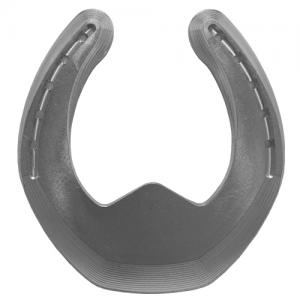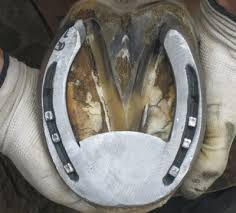Tuesdays with Tony
I’m going to let you in on a little secret: every few months my Docs and a bunch of farriers get together and spend a few hours learning from each other about the wild, weird world of horse shoes and feet. I think this is a great idea since I get an extra evening of humans entertaining me. I have also found exploring farrier trucks and trailers to be an enjoyable pastime. What I have learned from these evenings is: 1. Horses seem to have a lot of problems with their feet, 2. There are a whole bunch of ways to deal with said problems, 3. The problems encountered in Number 1 are best approached by a veterinary/farrier team. In my ongoing efforts to educate you humans about your horses, this week we’re going to talk about horse shoes.
Understanding the problem
In the realm of things done strangely, the equine foot takes the cake. While most of us have a foot made up of 4-5 different finger type things, the horse has to be different. They go with one finger, surround it with fingernail, and land on the tip. I’m not surprised problems happen. I am surprised at how diverse those problems can be. I’m also surprised at how much basic physics are involved in those problems. A little push here, a degree or two off there, add a bit of rotation to it, and Viola! You have one screwed-up foot.
 A deeper understanding of the problem
A deeper understanding of the problem
Putting the veterinarian and the farrier in the same location at the same time while watching the horse move lets them talk about what each one sees. The veterinarian may have found that the horse improves when the heels are blocked with lidocaine. The farrier noticed that the horse puts a whole lot of wear on the outside branch of the shoe. Looking at an x-ray of the foot together, the veterinarian sees some arthritis developing, and both of them notice that the joint space isn’t even across the coffin joint. Between the two of them, they can now talk about what may work to address the problem. Even better, when the Docs and the farriers work together, an x-ray can be taken during the shoeing process to make sure the shoe is exactly where it needs to be.
 Put a shoe on it (or maybe not)
Put a shoe on it (or maybe not)
I have learned that doing the basics well is sooo important. That’s a free life lesson from Tony, right there. With feet that means a good trim. See several previous excellent blogs I’ve written about what a good trim looks like. Horses being horses, sometimes they need more than a good trim can offer. That’s where shoes come in. Shoes help protect areas from getting worn down too much. For example, a club-footed horse wears off their toe very quickly, which makes the club foot worse. A simple shoe protecting the toe can do wonders for these horses. Shoes can add support where it’s needed. For example, a horse who toes out will push their inside hoof wall under the foot. By setting the shoe a little bit to the outside of that inside wall, we keep that weight bearing where it’s supposed to be.
 New and Exciting stuff
New and Exciting stuff
Now for the exciting part of shoes! There are shoes available that help treat specific issues your horse may have. These shoes are based on how tendons, ligaments, joints, and bones interact in the leg. Then a dash of physics (ok, way more than a dash) is applied. This leads to a shoe with wide parts in some areas, skinny parts in other areas, and all kinds of odd looking things that all have a role to play. My Docs brought in an expert on these shoeing principles for one of these farrier parties. It was so fascinating! I never imagined horseshoeing could be so enthralling.
Want to be sure you’re doing all you can for your horse’s feet? My Docs are more than happy to talk feet with you ANYTIME!! And now I’m off to nap on a good book about equine anatomy.
Until next week,
Tony
[jetpack_subscription_form title="Subscribe to Whinny's Wisdoms"]
Tuesdays with Tony is the official blog of Tony the Office Cat at Springhill Equine Veterinary Clinic in Newberry, Florida. For more information, please call us at (352) 472-1620, visit our website at SpringhillEquine.com, or follow us on Facebook!
